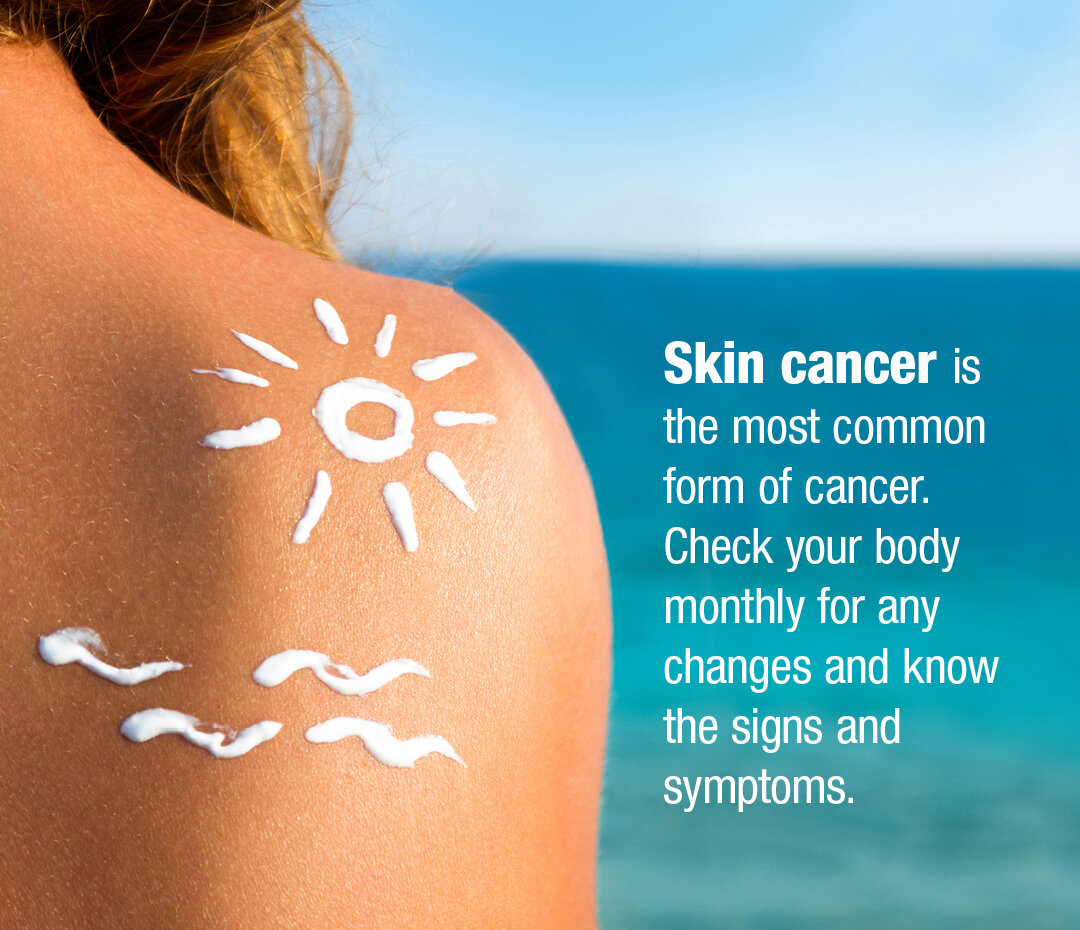
Signs & Symptoms
Early detection of cancer is the best treatment. Know the signs and symptoms of cancer so you can find it early when there’s a better chance for a cure.
Breast Cancer
Know how your breasts normally look and feel.
That way, you’re more likely to notice if there’s a change.
The Most Common Symptom
The most common symptom of breast cancer is a new lump or mass. According to the American Cancer Society, a painless, hard mass with irregular edges is more likely to be cancer, but breast cancers can be tender, painful, soft or round. That’s why it’s important to check with your doctor if you notice any new changes in your breasts.
Other Symptoms
Swelling of all or part of a breast (even if no lump is felt)
Skin dimpling (sometimes looking like an orange peel)
Breast or nipple pain
Nipple retraction (turning inward)
Nipple or breast skin that is red, dry, flaking or thickened
Nipple discharge (other than breast milk)
Swollen lymph nodes (Sometimes a breast cancer can spread to lymph nodes under the arm or around the collar bone and cause a lump or swelling there, even before the original tumor in the breast is large enough to be felt.)
Colon Cancer
Colon cancer doesn’t always cause symptoms right away.
Here are some of the most common symptoms,
according to the American Cancer Society.
A change in bowel habits (such as diarrhea, constipation, or narrowing of the stool) that lasts more than a few days
A feeling you need to have a bowel movement that's not relieved by having one
Rectal bleeding with bright red blood
Blood in the stool, which might make the stool look dark brown or black
Cramping or abdominal (belly) pain
Weakness and fatigue
Unintended weight loss
Many of these symptoms can be related to other conditions, so it’s important to see your doctor right away if you’re concerned.
Should I get tested?
Lung Cancer
Most lung cancers do not cause any symptoms until they have spread, according to the American Cancer Society. However, some people with early lung cancer do have symptoms. That’s why it’s important to see a doctor as early as possible so that you can prevent cancer before it has a chance to spread.
The most common symptoms of lung cancer are:
A cough that does not go away or gets worse
Coughing up blood or rust-colored sputum (spit or phlegm)
Chest pain that is often worse with deep breathing, coughing or laughing
Hoarseness
Loss of appetite
Unexplained weight loss
Shortness of breath
Feeling tired or weak
Infections such as bronchitis and pneumonia that don’t go away or keep coming back
New onset of wheezing
Most of these symptoms can be related to other conditions, so it’s important to see your doctor right away if you’re concerned.
Prostate Cancer
Most people find prostate cancer early through screening, according to the American Cancer Society. Early prostate cancer usually causes no symptoms.
The most common symptoms of advanced prostate cancer are:
Problems urinating, including a slow or weak urinary stream or the need to urinate more often, especially at night
Blood in the urine or semen
Trouble getting an erection (erectile dysfunction or ED)
Pain in the hips, back (spine), chest (ribs), or other areas from cancer that has spread to bones
Weakness or numbness in the legs or feet, or even loss of bladder or bowel control from cancer pressing on the spinal cord
Most of these symptoms are likely to be caused by something else
other than prostate cancer, so it’s important to see your doctor
right away if you’re concerned.
Skin Cancer
Several types of skin cancer exist. Some of the most common skin cancers and their symptoms are listed below:
Basal Cell Skin Cancer
Basal cell cancers usually develop on areas of the body exposed to the sun such as the head, face and neck, but can occur anywhere.
The most common symptoms of basal cell skin cancer are:
Flat, firm, pale or yellow areas, similar to a scar
Raised reddish patches that might be itchy
Small translucent, shiny, pearly bumps that are pink or red and which might have blue, brown, or black areas
Pink growths with raised edges and a lower area in their center, which might have abnormal blood vessels spreading out like the spokes of a wheel
Open sores (that may have oozing or crusted areas) and which don’t heal, or heal and then come back
Squamous Cell Skin Cancer
Squamous cell cancers usually develop on areas of the body exposed to the sun such as the face, ear, neck, lip and back of the hands. They occasionally develop in scars or skin sores elsewhere.
The most common symptoms of squamous cell skin cancer are:
Rough or scaly red patches, which might crust or bleed
Raised growths or lumps, sometimes with a lower area in the center
Open sores (that may have oozing or crusted areas) and that don’t heal, or heal and then come back
Wart-like growths
Check with your doctor
if you notice any irregular lumps, bumps or changes in your skin.
Melanoma
Melanoma is less common that other types of skin cancer, but it is more deadly and more likely to spread. Use the “ABCDE rule” to check for signs of melanoma, which include the following:
Asymmetry — One part of a mole or birthmark that doesn’t look like the other
Border — Edges that are irregular, ragged, notched or blurred
Color— Color that isn’t the same all over and may include shades of brown and black, sometimes with patches of red, pink, white or blue
Diameter — A spot that’s larger than ¼ inch across (about the size of a pencil eraser). Some melanomas may be smaller than this.
Evolving — A mole that changes in size, shape or color
Cervical Cancer
Women with early cervical cancers and pre-cancers usually have no symptoms, according to the American Cancer Society. Symptoms don’t often begin until the cancer becomes larger and has spread.
When this happens, the most common symptoms of cervical cancer are:
Abnormal vaginal bleeding, such as bleeding after vaginal sex, bleeding after menopause, bleeding and spotting between periods, or having (menstrual) periods that are longer or heavier than usual. Bleeding after douching may also occur.
An unusual discharge from the vagina − the discharge may contain some blood and may occur between your periods or after menopause.
Pain during sex
Pain in the pelvic region
These symptoms can also be caused by conditions other than cervical cancer.
Check with your doctor right away if you notice any of the above
symptoms and are concerned.
Should I get tested?






